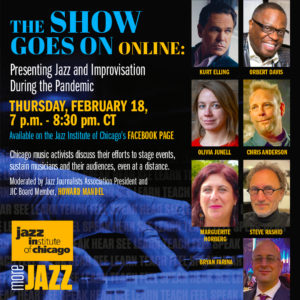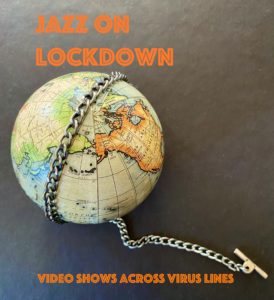Lollapalooza 2021 had some 385,000 attendees (without significant Covid-19 outbreak, fortunately) but featured little of host Chicago’s indigenous talent or styles. And that’s just wrong, declared Department of Cultural Affairs and Special Events commissioner Mark Kelly, launching the month-long Chicago in Tune “festival” at a reception August 19. Here’s the still-evolving event calendar of hundreds […]
Jazz beats the virus online
Chicago presenters of jazz and new music, and journalists from Madrid to the Bay Area, vocalist Kurt Elling, trumpeter Orbert Davis and pianist Lafayette Gilchrist discussed how they’ve transcended coronavirus-restrictions on live performances with innovative methods to sustain their communities of musicians and listeners, as well as their own enterprises were in two Zoom panels […]
JazzOnLockdown: Musicians, venues, .orgs — writers? — turn to live-streaming
It’s the most obvious, available and so far low-cost option for anyone who can cast a performance online for public consumption — jazz musicians specifically included: Live-streaming. Fred Hersch has been first out of the box, committing to live-streaming daily mini concerts from his living room, 1pm Eastern Daily Time (10am PST, 7pm in Europe) […]


